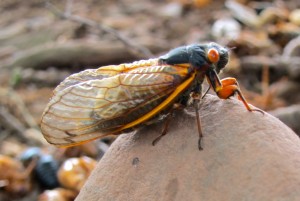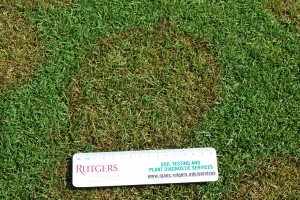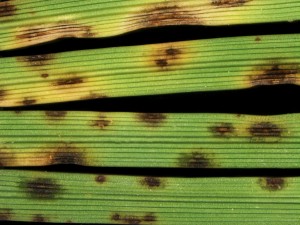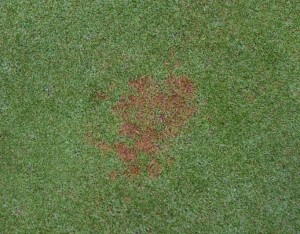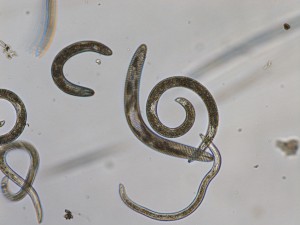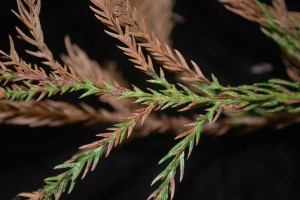You’ve got to suffer if you want to sing the blues… and some of us in certain parts of the state have been suffering the infernal din of the periodical cicadas since late-May.
Red, White, and Brown?
Patch that is! Recent weather conditions have driven the fungus Rhizoctonia solani into overdrive. Brown patch has flared up all over the place just in time for our July 4th celebrations!
The Last Word in Leaf Spots
Oh no! Not more leaf spot posts! This is the last one for now, I promise. First thing first, we had a nice sample from a perennial ryegrass baseball field that was submitted for dollar spot diagnosis, which it had, but it was also covered with leaf lesions caused by the fungus Bipolaris sorokiniana. Sabrina thought it would be nice to share a photo with you.
Red Leaf Spot… or not?
Red leaf spot of creeping bentgrass is a poorly understood leaf spot disease in turfgrass. Almost all golf course superintendents think they have it at one point or another, but nobody ever really does.
Nematoda No Antidota?
Golf turf sample submission has been rather slow so far this season. Arguably, cooler temperatures and ample precipitation this spring have provided us with excellent growing conditions for cool-season turfgrass. As long as everybody’s grass looks good, then submissions stay down (bring on some heat!). There has been one exception this season, which is the frequent submission of samples for nematode analysis.
Maskelled Bandit
If you don’t pay attention, the Maskell bandit will steal the health of your conifers. Maskell scales, Lepidosaphes pallida, will cause needle browning and branch dieback on Cryptomeria, Sciadopitys, and Pinus thunbergiana. Heavy infestations can cause tree death.
